

The State of AI in Contract Management
A quarterly study of contracts by Oneflow

This report aims at understanding the current state of AI in contract management across various industries.
By using real data and insights from those who work with contracts as core parts of their job, we aim to chart the market maturity in terms of adopting AI into their contract management process and provide a glimpse into future of contract management.


Contracts drive business
What might not be immediately apparent to outsiders is that contracts are the backbone of any company. From hiring employees who agree to terms of employment, to securing office space through a lease or purchase agreement, to finalizing sales with customers – all these actions are cemented by contracts. Contracts influence nearly every facet of a business, marking them as some of the most crucial assets a company holds.
In this report, you’ll learn about:
How far have we come in terms of adopting AI in contract management?
Which are the biggest drivers of adopting AI in contract management?
Which are the challenges faced by business professionals in adopting AI in contract management?


What is AI in
contract management?
We define contract management as the process of managing the agreements that you, either individually or as a business make with other parties. This process spans across the contract lifecycle from pre-sign to post-sign, covering the renewing, renegotiating, executing, complying, archiving, and storing of contracts.
With AI, we’re not just talking about a slight add-on. We’re talking about a leap into a future where data-driven insights and automation are the norms. Imagine contracts that alert you to opportunities and risks before you’ve even thought to look for them. This is where we’re headed, and it’s exciting!
Respondent demographics
The survey captured over 200 business professionals in various roles within organizations, reflecting the broad interest and implications of AI in contract practices across various teams.
This demographic spread highlights the interdisciplinary interest in AI’s role in contract management, pointing to its broad applicability and the potential for cross-sectoral innovation and improvement in contract processes.
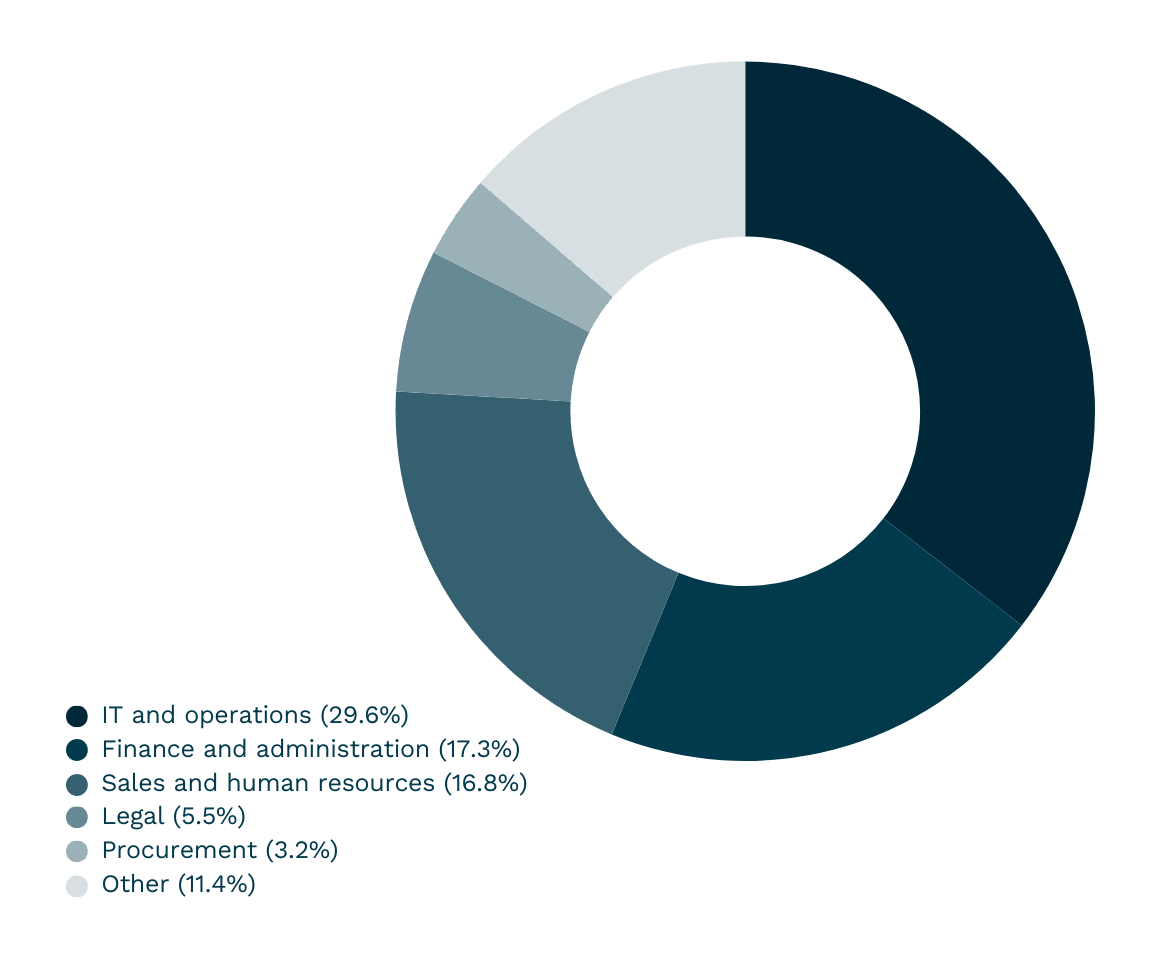

Respondents by role
IT and operations: Representing the largest group, 29.6% of participants are from IT and operations, indicating a strong involvement in AI from those directly responsible for implementing and managing technology solutions.
Finance and administration: The second-largest group, with 17.3%, underscores the finance team’s interest in the efficiencies and oversight AI can provide.
Sales and human resources: Both areas showed significant representation, with 16.4% in sales and 16.8% in human resources, highlighting the cross-functional impact of AI on processes like contract management that affect client relations and employment practices.
Legal: Despite comprising 5.5% of the survey population, the legal team’s involvement is crucial, given the direct impact of AI on contract drafting, negotiation, and compliance.
Procurement: With 3.2%, this group’s interest points to the role of AI in streamlining sourcing and purchasing agreements.
Other: An interesting 11.4% identified with roles not explicitly listed, including customer relations, teaching, design, social work, and more, demonstrating the wide-ranging implications of AI in contracts.
Industry distribution
of respondents

Technology and information services: Leading the representation with 20.5%, this sector’s strong interest reflects its direct involvement with the innovations of AI in contract management.
Financial services: Accounting for 15.9%, the financial sector’s engagement points to AI’s role in managing complex contracts, compliance, and risk assessment.
Consumer goods and retail: Making up 11.8%, this industry’s involvement highlights the broad applicability of AI in contracts related to supply chains, distribution agreements, and consumer transactions.
Manufacturing and industrial: With 10.5%, the focus here may be on AI’s potential to streamline operations, procurement, and service agreements.
Healthcare and pharmaceuticals: Representing 8.6%, indicating a significant interest in AI for managing contracts in a highly regulated and sensitive industry.
Real estate and construction: Accounting for 5.9%, where AI could transform contract management for projects, sales, and service contracts.
Energy: Comprising 4.1%, reflecting interest in managing contracts related to supply, distribution, and innovation in energy sourcing.
Other: A significant 15.0% from varied sectors, including education, government, social work, and more, showcasing the universal benefits of AI across all forms of contract management.
Organizational size
of respondents
The distribution of respondents by organizational size offers insights into the survey’s reach across various scales of businesses, from small enterprises to large corporations.
The broad spectrum of organizational sizes among survey respondents highlights the universal relevance of AI in contract management across the business landscape.
The significant interest from both ends of the spectrum — small startups to multinational corporations — underscores the wide ranging potential impacts of AI on improving efficiency, reducing overheads, and enhancing the strategic management of contracts.
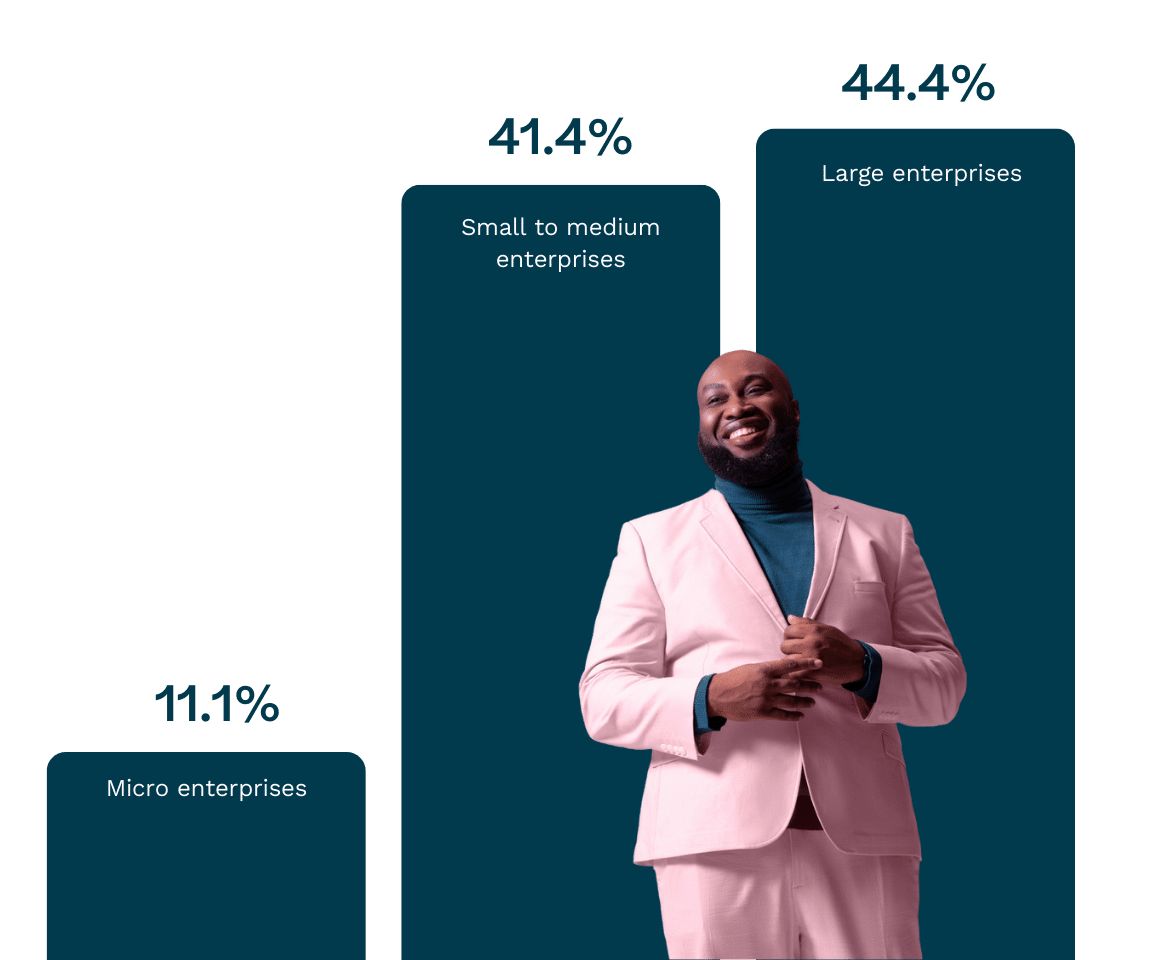

Respondents by organizational size
Micro enterprises (1-10 employees): Combining those with 1 employee (3.2%), 2-5 employees (1.8%), and 6-10 employees (5.9%), we see a total of 10.9% of respondents coming from very small businesses. This group reflects the interests of solo entrepreneurs and small teams in leveraging AI for contract management.
Small to medium enterprises (11-250 employees): This segment includes businesses with 11-25 employees (7.3%), 26-50 employees (11.4%), 51-100 employees (11.8%), 101-250 employees (5.0%), and 251-500 employees (5.0%), totaling 40.5% of respondents. SMEs represent a significant portion of the survey, indicating keen interest in AI’s potential to streamline operations and enhance competitiveness.
Large enterprises (501 employees and above): This category encompasses organizations with 501-1000 employees (16.8%), 1001-5000 employees (10.9%), and more than 5000 employees (18.6%), making up 46.4% of the survey population. The substantial representation of large enterprises underscores the critical role of AI in managing complex contract landscapes at scale.
Use of AI in contract management
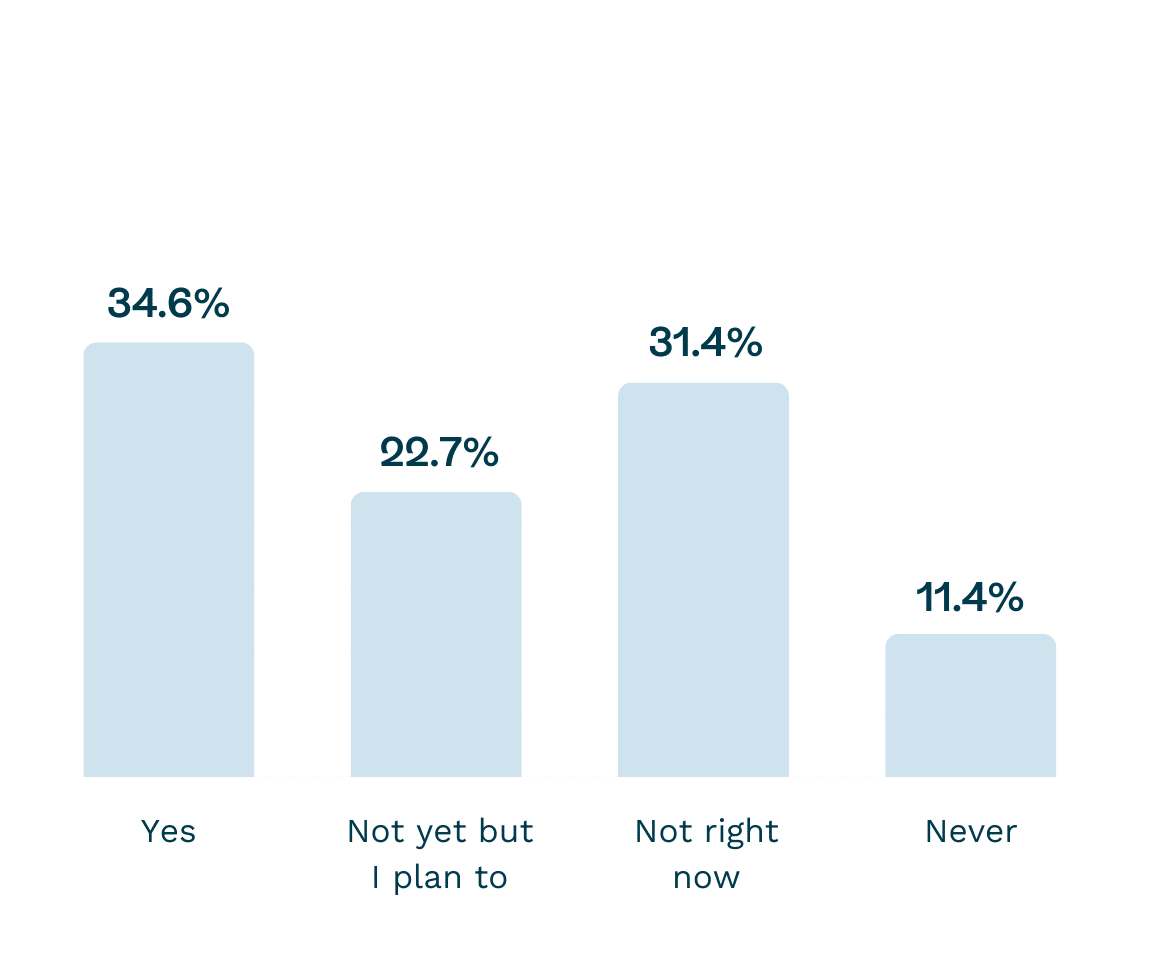

Are you using AI in your contracts right now?
57.3% of respondents use AI and plan to use AI in their contract management process.

If you’re not using AI in contracts, and never plan to, what are the biggest reasons?
57.3% are positive with using AI in contract management
34.6% confirmed that they are currently utilizing AI technologies in their contract processes. Interestingly,
22.7% are in the planning stages of adding AI into their contract processes, indicating the anticipated growth in future AI adoption.
A smaller segment of the surveyed population, 11.4% expressed no interest in adopting AI for their contracts, citing reasons that may range from satisfaction with current processes to concerns about AI’s applicability or complexity.
Integration of AI in contracts
In which types of contracts is AI technology most commonly incorporated?
The responses highlight a strategic integration of AI across various contract types, with a tendency to start with low-risk areas. The variety in application areas showcases AI’s flexibility and potential to streamline and enhance various aspects of contract management.


30% – Low risk contracts
Organizations are keen to apply AI where it can enhance efficiency and accuracy without significant risk, providing a safer testing ground for broader AI adoption.
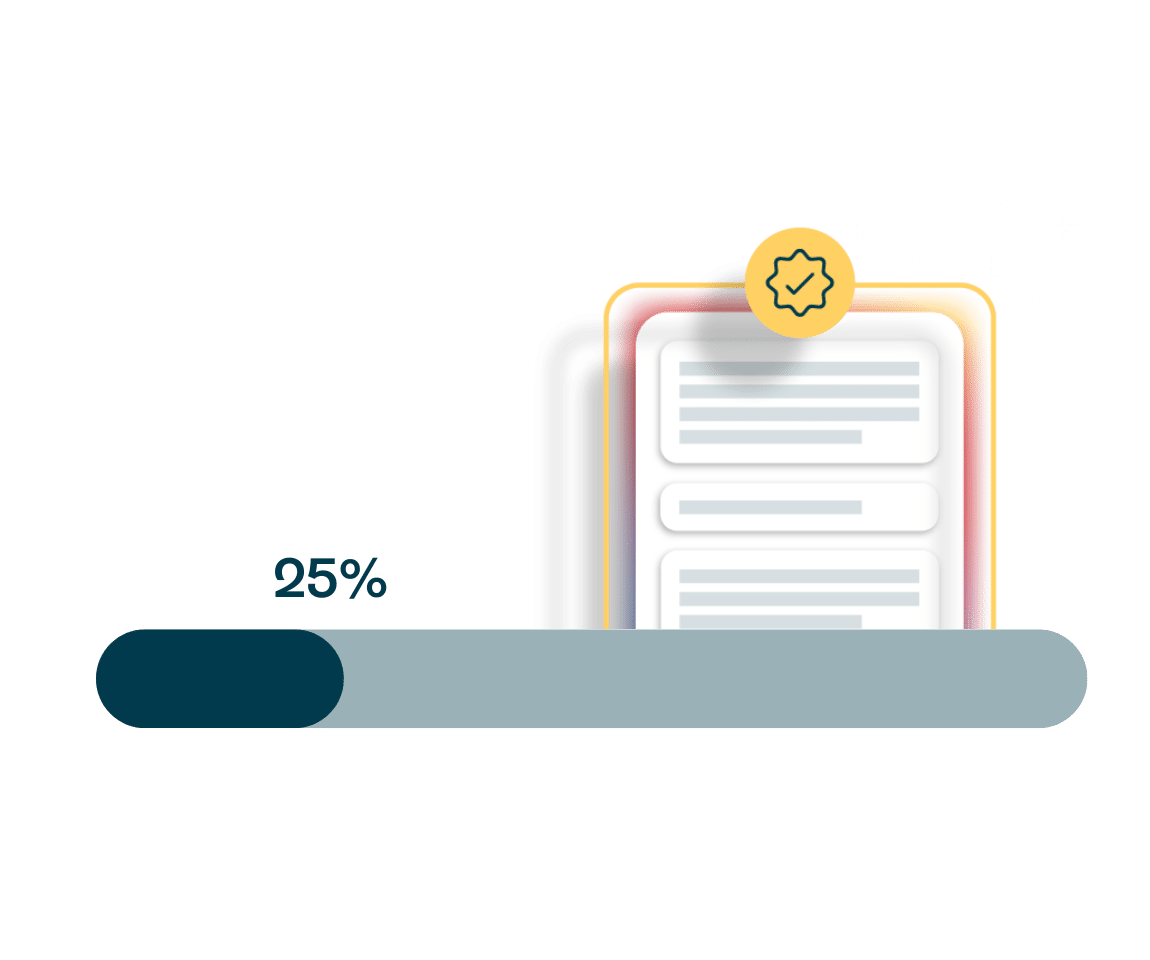

25% – Service agreements
The application of AI here shows its potential to manage and optimize ongoing service relationships, a critical aspect of many businesses’ operations.
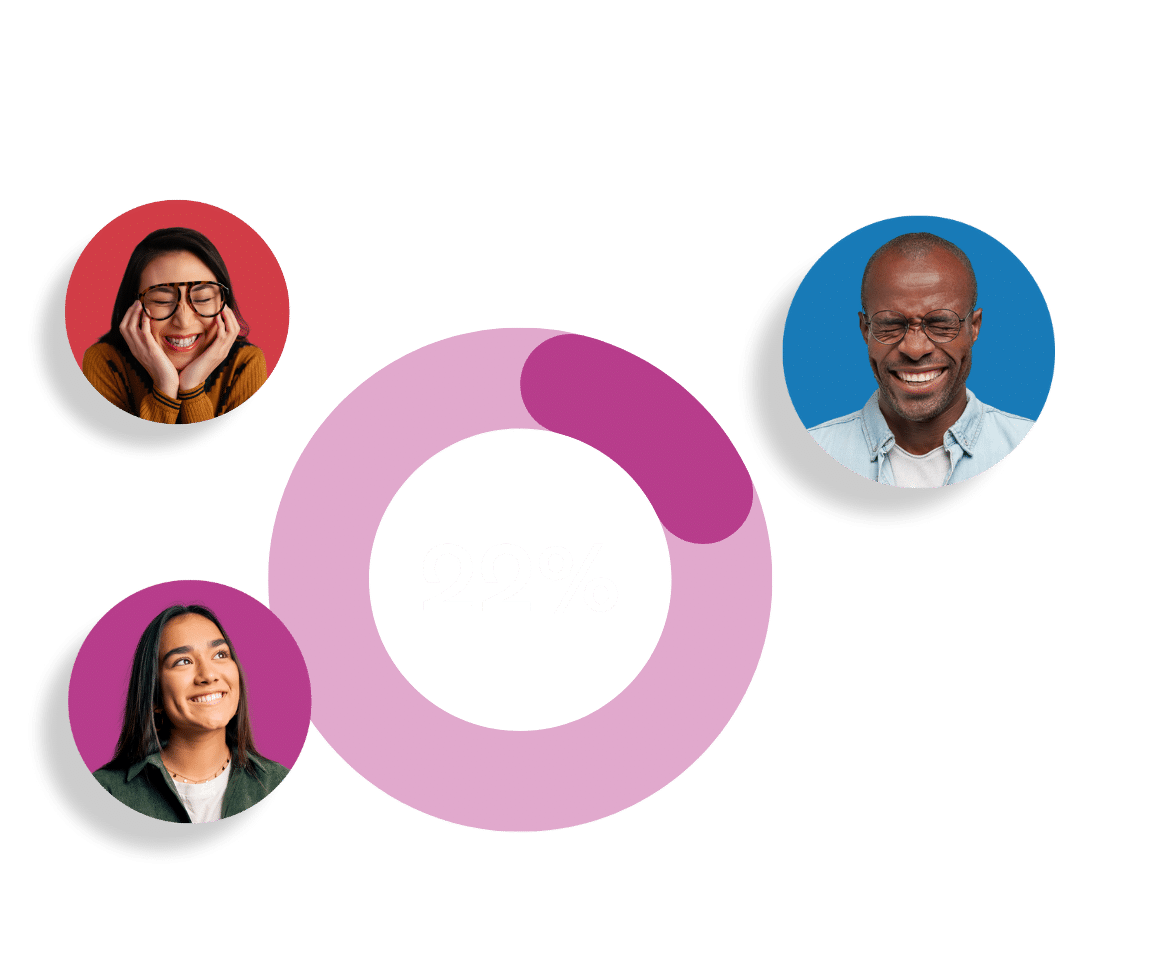

22% – Employment contracts
The application highlights AI’s role in standardizing and streamlining the complexities associated with employment terms, benefits, and compliance issues


21% – Purchase agreements
Integrating AI into these agreements illustrates the technology’s value in facilitating transactional processes, improving accuracy, and speeding up negotiations.
AI takes on the main stage
What AI applications have you come across in contract management?
The results show that AI is widely used in many areas of contract management, from creating specific clauses to analysing risks and making predictions. It also underlines the important role of AI in ensuring that contracts comply with rules and that risks are properly managed.




AI going forward
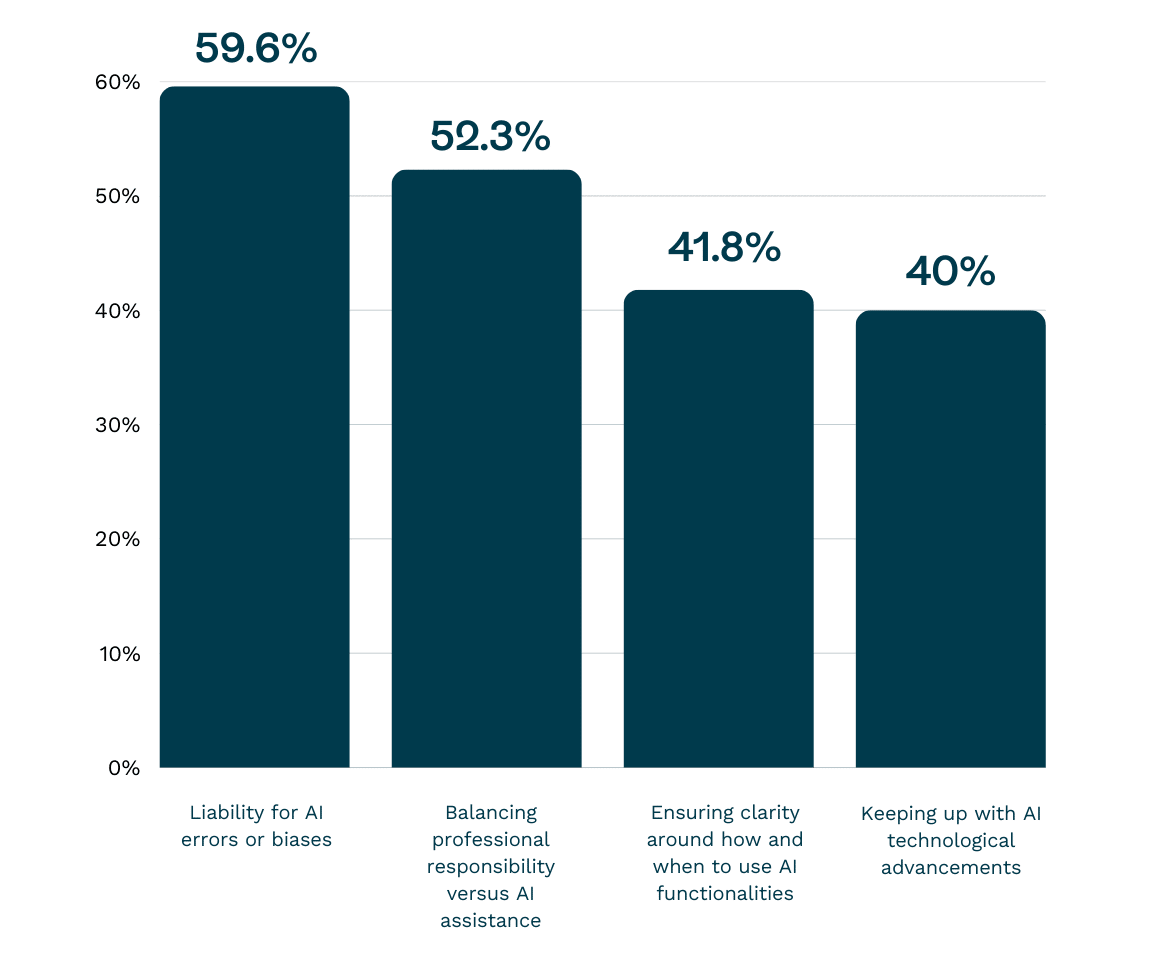

What challenges do you face or foresee when using AI to draft your contracts?
These challenges point out the tricky aspects of using AI to create contracts, including making sure the technology is both trustworthy and fair, as well as dealing with how it changes the way professionals work together.

How do you anticipate the evolution of AI technology impacting contract practices?
Looking ahead at how AI is changing the game for contracts, it’s clear we’re stepping into a world full of new possibilities and hurdles.
Everyone in the field seems to agree: AI is going to shake things up in a big way, making things faster and more efficient but also a bit more complicated. We’re going to need to think on our feet, tweaking our legal tactics and updating the rule book to keep up with these changes.


How do you address ethical
considerations & bias in using AI?
To keep trust in AI when it’s used for managing contracts, it’s important to use it ethically and avoid any bias. These findings show that the experts are really proactive about making sure AI is used in a good way.
Keeping an eye out for issues, sticking to clear rules, and taking direct action to prevent problems are some of the approaches that help make sure AI does its job without being unfair or making mistakes.

Charting the future of contracts
The future of contracts is not just digital — it’s
revolutionized by AI. Our findings back this up, painting
a picture where digital transformation, powered by AI, reshapes the way we work with contracts.
It’s clear that digital contracts are not just a part of this change; they’re at its heart, driving success. AI-powered contract management tools that cover the whole lifecycle—pre-signing to post-signing—will not just speed things up. They’ll increase the collective intelligence for businesses.
In today’s economic landscape, where cost-cutting and productivity are top of mind, companies across the globe are turning to efficiencies that AI and automation can create for the business that save money and time.


Key conclusions
– AI adoption in the contracts is at an early stage
– There’s a growing adoption and interest in AI across industries and organizational sizes
– Broad application across contract types starting with low-risk areas
– Efficiency and risk management as key motivators
– Diverse AI applications in contracting practices from individual contract review to large-scale contract processing and risk analysis
– Challenges in AI contract drafting as well as ethical considerations and bias mitigation are necessary
– AI impact on future contract practices present opportunities for the business




